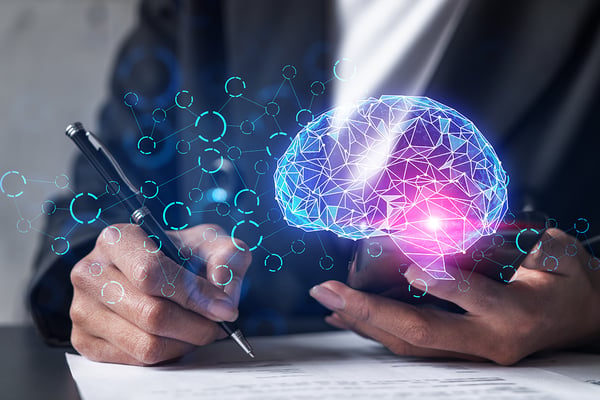Legal technology is in the midst of a revolution. For years, the industry lagged in digital transformation because of limited law practice modernization opportunities. The law was far too complicated and subjective to hand over to machines. However, artificial intelligence (AI) has helped overcome the hurdle that prevented next-generation innovation. A key driver of this innovation is the use of machine learning in the legal industry.
Machine learning powers AI programs that help attorneys eliminate time-consuming and often mundane tasks. Contracts are a significant time sink, both in their creation and in the litigation that follows when something is wrong. In fact, contracts are the primary cause of legal disputes in many industries. AI intervenes to limit these litigation risks by allowing attorneys to gain review assistance through unbiased, intelligent technology that thinks like a lawyer.

Machine Learning in the Legal Industry: Benefits and Limitations
Machine learning is a building block of artificial intelligence. In its simplest form, it's an algorithm that organizes and interprets data. The machine learning process can be classified in one of two ways: supervised or unsupervised.
Supervised Machine Learning
|
Unsupervised Machine Learning
|
| Supervised machine learning refers to a process of labeling data and creating categories for it. It starts with a known dataset and allows the computer to make inferences using that information. |
Unsupervised machine learning is a much less organized process. It uses raw data that has no labels or categories. The onus is on the program to establish a dataset and make inferences from the information. |
In both supervised and unsupervised machine learning, the algorithm's accuracy increases as the amount of data expands. It is a process based on the law of large numbers: a statistical theory that explains how large sample sizes increase accuracy as they limit inflated results based on statistical anomalies.
Until recently, data limitations prevented machine learning from becoming a mainstream practice. Organizations lacked access to large data samples and the processing capabilities to evaluate them. Processing improvements and larger data stores have helped to drive machine learning into the mainstream. Today, it offers a way to manage and improve business processes, customer experiences, employee training, and more.
However, the client’s need for confidentiality creates a major constraint on innovating the legal and contract management fields. The legal machine learning program—like any program—depends on data, but data is in short supply when open source information is unavailable.
Additionally, the language complexity in contracts creates another obstacle to applying machine learning. While natural language processing leverages statistical techniques and inferences to read and understand content the way a human would, legal information can change rapidly and make those statistical inferences moot. Repeatedly retraining the machine to understand these changes is cumbersome and likely to impact the algorithm's effectiveness. A hybrid approach that leverages the insight of attorneys, natural language processing, and machine learning can help to overcome these limitations.
Gaining Attorney-Level Insight from AI Contract Management
Combining specific subject matter language processing capabilities with machine learning in the legal industry makes AI contract management possible. The primary goal should be to create a program capable of mimicking the behavior of a real attorney in reviewing, redlining, and negotiating contracts.
Consider a business world staple: the non-disclosure agreement (NDA). The counterparty would want to eliminate any clauses that would make the contract unenforceable. The AI program would parse the contract, note any areas of concern, and explain the issue.
For example, during the first pass, the program may report that the contracting parties failed to establish a time limit on the NDA. That report would trigger a warning that the contract may be either partially or entirely unenforceable in locales where perpetual NDAs are not recognized. The program would recommend a set period be added, and it may even provide a suggested timeframe. A review of that NDA by the AIis completed in a matter of minutes. Comparatively, the same review could have required several hours of attention by a human attorney.
Most of these programs are proprietary and based on the specific legal technology firm's criteria. As a result, quality can vary widely. Some technology may simply offer redlining and risk assessments. Other programs provide comments and suggestions that will close potential legal loopholes and limit the risk of future contract litigation. The latter is a far more accurate example of genuine AI contract review.
Machine learning in the legal industry is ushering in a new era for the traditionally low-tech field. Of course, it's not a standalone technology. Combining it with other methods and processes offers much more effective contract review capabilities. These sophisticated programs allow attorneys to focus more energy on complex tasks while limiting the high risk of contract disputes, potential compliance issues, or inconsistent negotiation positions.
LexCheck leverages machine learning specific to the legal industry and other proprietary methods to power an intuitive AI platform that enhances the contract review process. Request a demo to see our technology in action.

